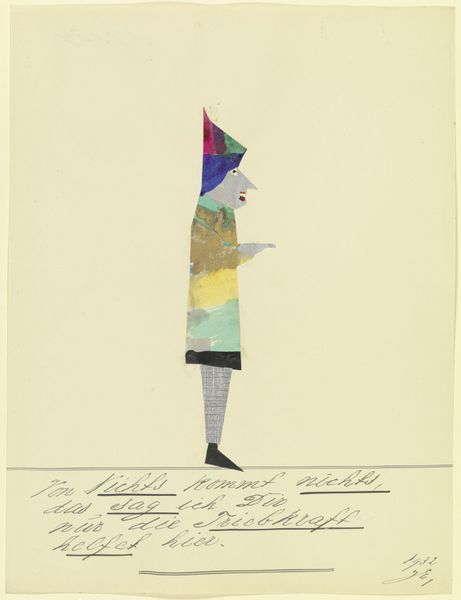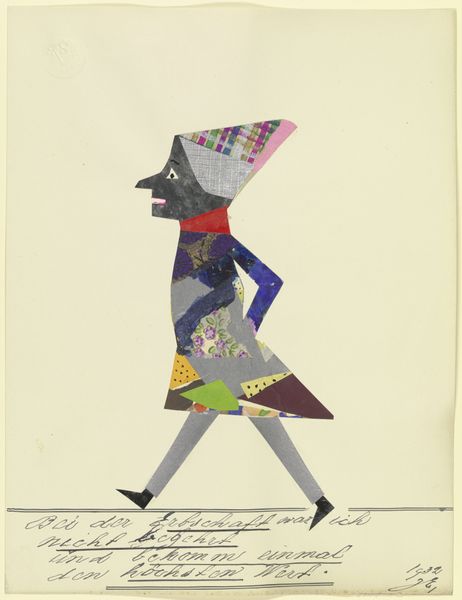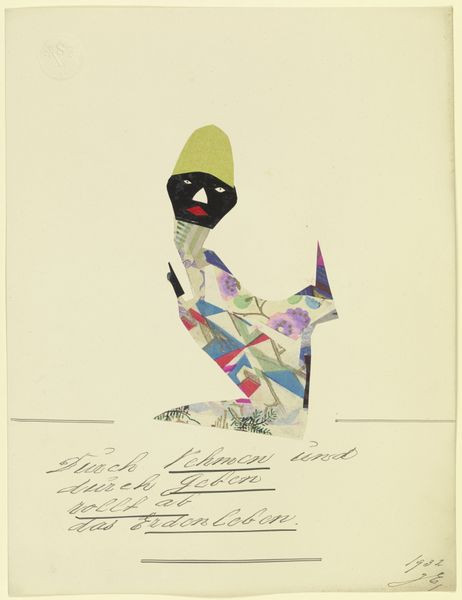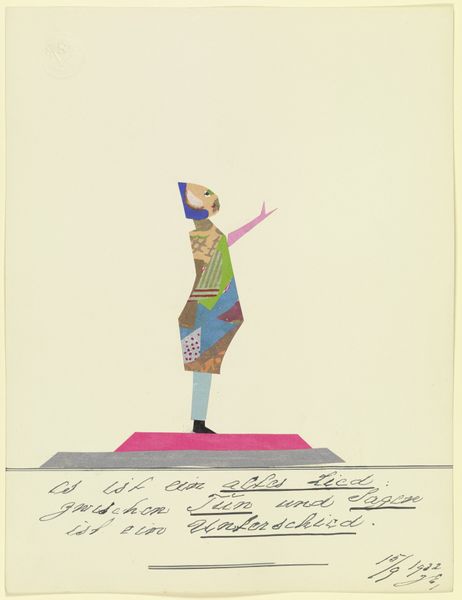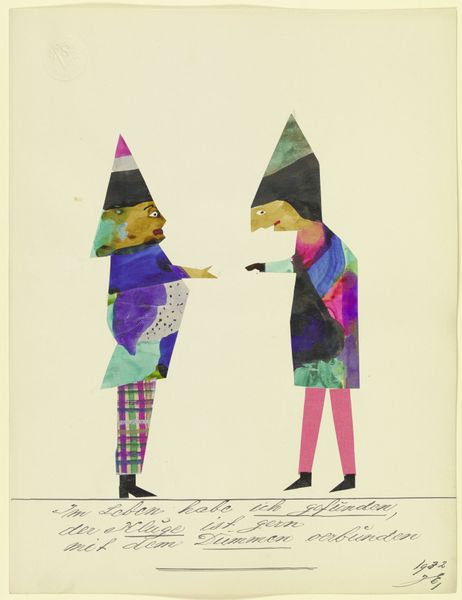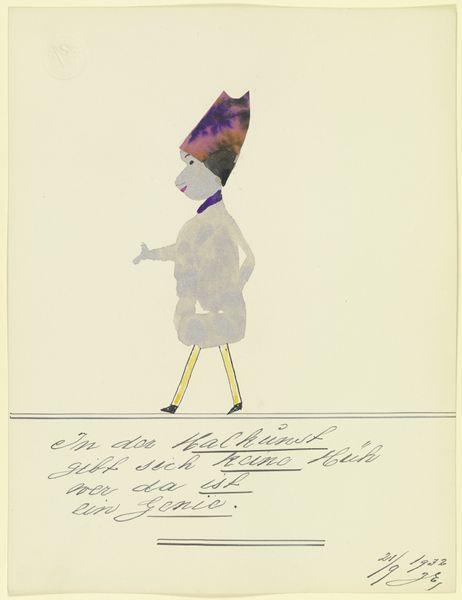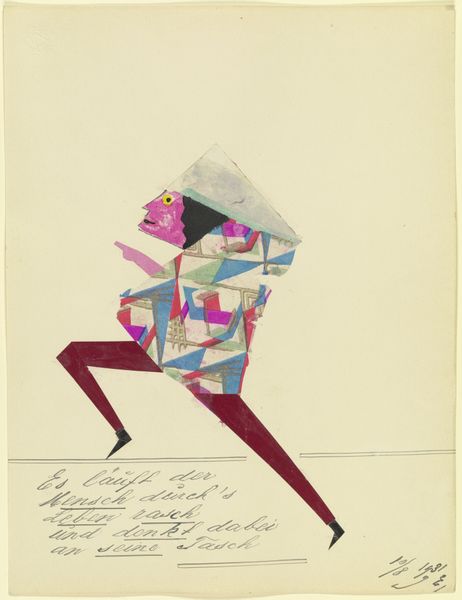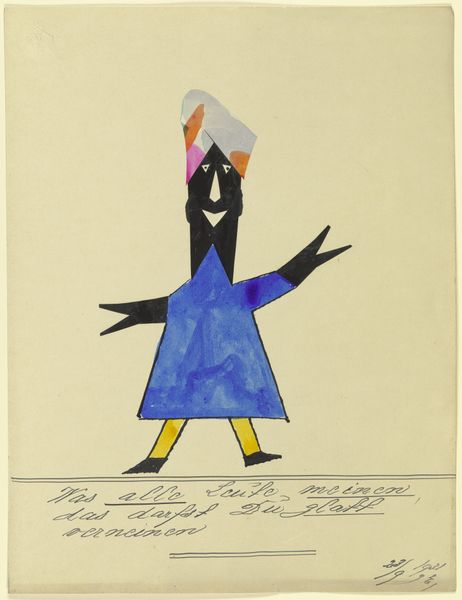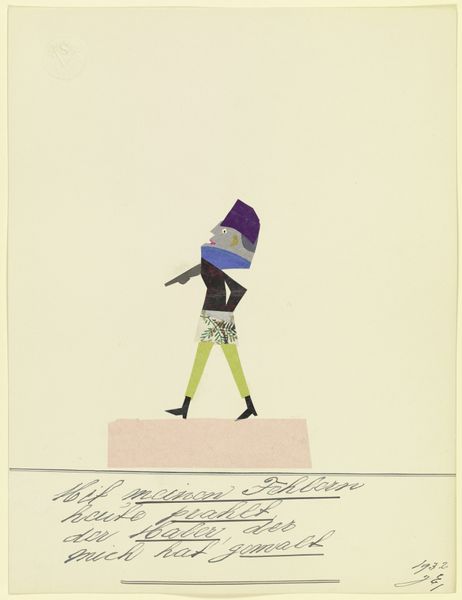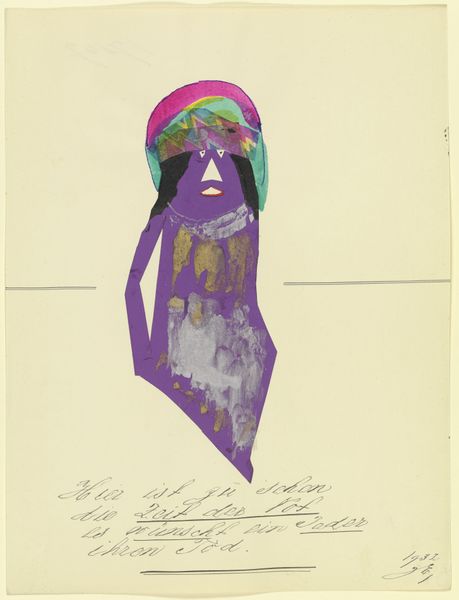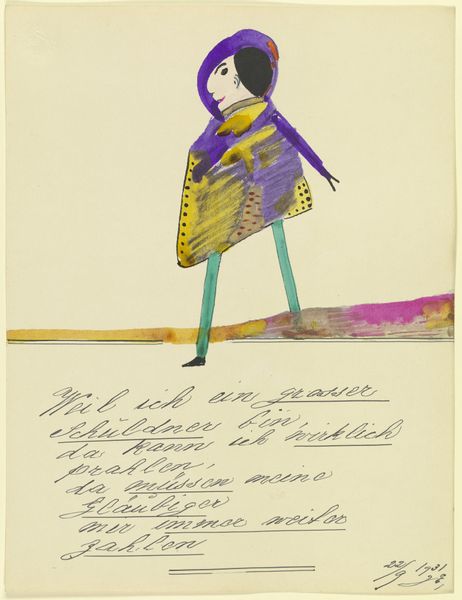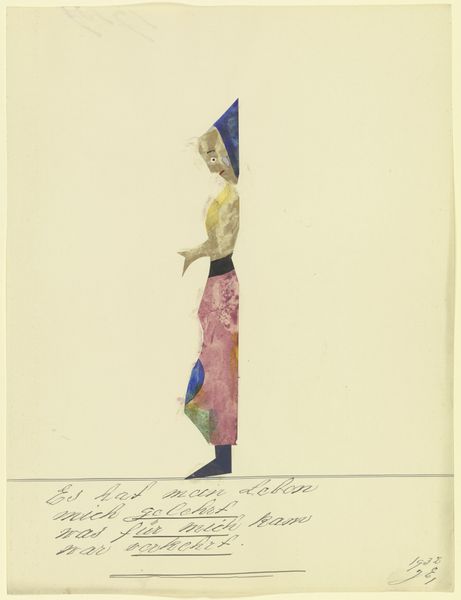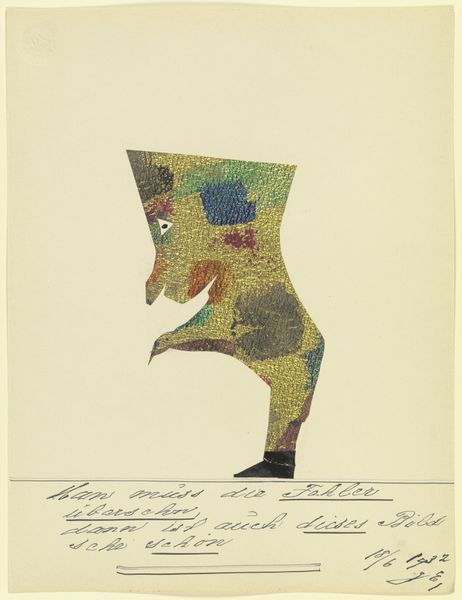
Copyright: Public Domain
Curator: This captivating work is John Elsas' "17705 ('Meine grosse Arbeit begann ich mit Vergnügen …')" created in 1932. It's a collage featuring gouache, ink, and paper, currently residing here at the Städel Museum. Editor: Well, my immediate reaction is a sense of whimsy. The figure seems almost birdlike, a formal and aloof bird perhaps, crafted from playful textures and colors. The upward pointed beak and outstretched hand create an inquisitive impression. Curator: I find myself considering the artist’s hand, the act of cutting, pasting, layering. What societal conditions or artistic movements empowered the artist to assemble discarded materials in such an expressive, yet abstract manner? Editor: Yes, but first look at how Elsas has deliberately juxtaposed patterned paper and color fields to create this patchwork figure, this playful juxtaposition offers an intriguing tension between order and chaos. Also notice that the text at the bottom, scrawled by hand, becomes part of the artwork itself, complicating traditional divisions between writing and visual art. Curator: Absolutely. The integration of text and image signals a challenge to conventional artistic hierarchies, making art from ordinary sources – and what does that labor entail for the artist himself? What socioeconomic factors dictated his access to materials and his choice to create in collage rather than, say, oil painting? Editor: However, the shapes that make up the composition. Note how the diagonal lines in the dress create movement, a dynamic tension counterbalanced by the rigid geometry of the figure itself. I also want to focus on the impact of color here; purple contrasts sharply with that yellow, drawing the eye across the composition and holding one's gaze on the form. Curator: Perhaps we are invited to interpret this "great work," this collage of materials, as a metaphor for the artist's lived experience, a life pieced together from disparate fragments, subject to political and economic forces that determined the very materials he used. Editor: I see it slightly differently: less as an index of production and consumption, but a symbolic system that emphasizes aesthetic relationships of forms, colors, lines and textures; but the larger context gives the forms resonance that makes a formalist consideration ultimately more valuable. Curator: An excellent point, thinking about this artwork brings new context to materiality that I hadn’t previously considered! Editor: And analyzing how visual and textual elements form such engaging harmony can give new ways of appreciating any creative undertaking.
Comments
No comments
Be the first to comment and join the conversation on the ultimate creative platform.
